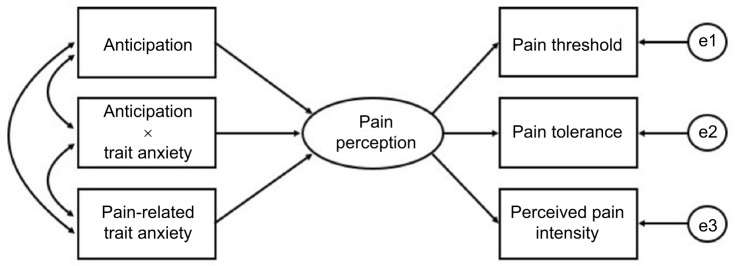Figure 2.
Predicted anticipation model.
Notes: This figure depicts the structural equation modeling used to analyze the influence of pain anticipation, pain-related anxiety, and the moderating effect of pain-related anxiety on pain perception. The rectangles () represent observed variables, while the ellipses () represent the unobserved latent factors. The single-headed arrows with solid lines (→) represent the path coefficient for regression of one variable on another. The double-headed arrows (↔) represent covariances or correlations between pairs of variables. Trait anxiety indicates pain-related trait anxiety. “×” in Anticipation × Trait anxiety box indicates the interaction between anticipation and pain-related trait anxiety. e1 indicates measurement error for pain threshold reading; e2 indicates measurement error for pain tolerance reading; e3 indicates measurement error for perceived pain intensity rating.

